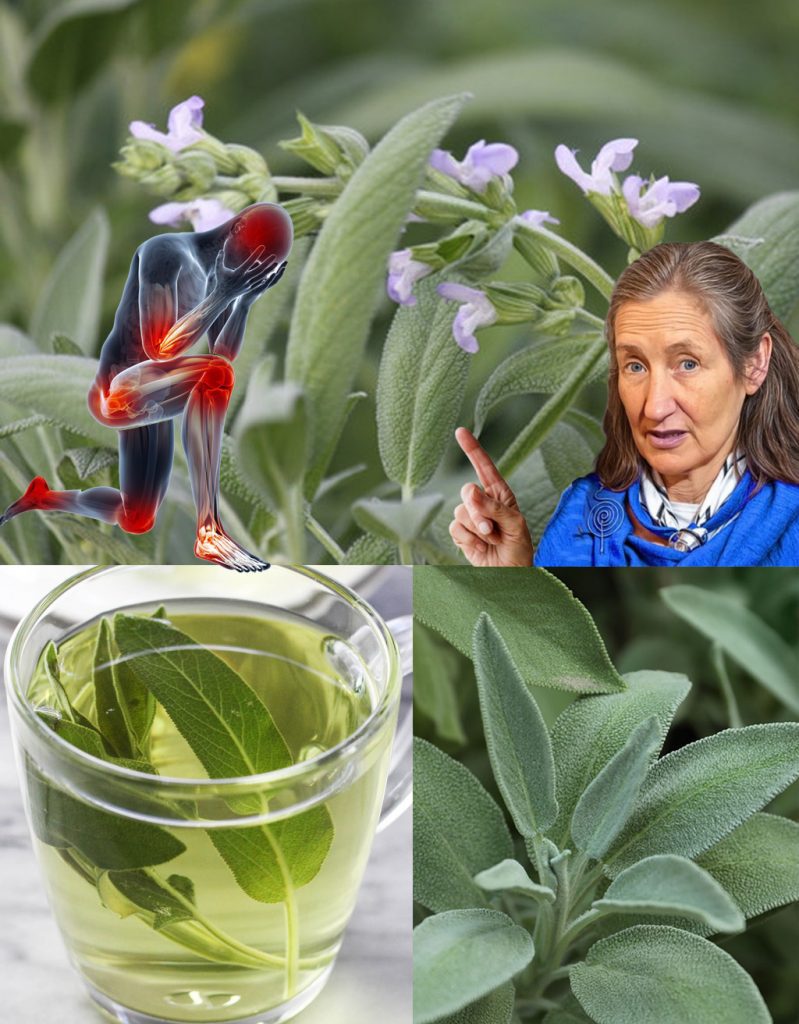How to Use Sage in the Most Natural and Effective Way: A Remedy for Brain Health, Inflammation, and Joint Pain

Have you ever felt the weight of foggy thinking, lingering inflammation, or the ache of stiff joints creeping into your daily life? As we navigate the challenges of aging or stress, finding natural solutions can feel like a breath of fresh air. Enter sage (Salvia officinalis), an aromatic herb with a rich history in traditional medicine, now gaining renewed attention for its potential to support brain health, reduce inflammation, and ease joint pain. Packed with antioxidants, essential oils, and bioactive compounds, sage offers a gentle, holistic remedy that aligns with your body’s natural rhythms. Whether you’re seeking mental clarity, relief from discomfort, or a boost in vitality, here’s how to use sage in the most natural and effective way, exploring its benefits, practical uses, and precautions as of 04:30 PM +07 on Friday, August 01, 2025.
Why Sage Is a Timeless Herbal Ally
Sage, a member of the mint family, has been revered since ancient times for its healing properties, from Greek physicians to Native American traditions. Its silvery-green leaves are rich in rosmarinic acid, cineole, and flavonoids—compounds that combat oxidative stress and inflammation. As a natural skin care remedy that reflects inner wellness and an immune-boosting food that supports resilience, sage fits seamlessly into the 2025 trend toward sustainable, plant-based health solutions, offering a detox the body naturally boost to your routine.
Health Benefits of Sage for Brain, Inflammation, and Joints
Uncover the remarkable ways sage can enhance your well-being:
- Enhances Brain Health: Improves memory and cognitive function, with studies (e.g., Pharmacology Biochemistry and Behavior, 2008) showing sage extracts enhance acetylcholine activity, potentially aiding Alzheimer’s or age-related decline.
- Reduces Inflammation: Rosmarinic acid and antioxidants lower systemic inflammation, easing chronic conditions like arthritis.
- Relieves Joint Pain: Anti-inflammatory properties reduce stiffness and swelling, improving mobility.
- Boosts Immunity: Antimicrobial and antioxidant effects strengthen defenses against infections.
- Supports Digestion: Stimulates bile flow, aiding nutrient absorption and reducing bloating.
- Improves Mood: Mild sedative qualities alleviate anxiety and promote relaxation.
- Protects Skin: Antioxidants combat acne and premature aging when used topically.
- Regulates Blood Sugar: May enhance insulin sensitivity, supporting diabetes management.
- Promotes Oral Health: Antibacterial action reduces plaque and gum inflammation.
- Aids Detoxification: Diuretic effects flush toxins, supporting liver and kidney health.
These benefits position sage as a versatile home treatment for inflammation, nurturing both mind and body.
How to Use Sage for Maximum Benefit
Incorporate sage into your routine with these DIY beauty tips and natural methods:
- Sage Tea for Brain and Joints: Steep 1–2 teaspoons dried leaves (or 5–7 fresh, washed leaves) in 1 cup hot water for 10 minutes. Drink 1–2 cups daily—morning for cognition, evening for pain relief.
- Sage Mouth Rinse: Brew a strong tea, cool, and swish for 1 minute to soothe gums and freshen breath.
- Topical Compress: Soak a cloth in warm sage tea, apply to aching joints for 15–20 minutes to reduce inflammation.
- Sage-Infused Oil: Steep dried leaves in olive oil (1:2 ratio) for 2 weeks, strain, and massage into joints or skin for relief.
- Culinary Boost: Add fresh leaves to soups or stews for a nutrient-rich flavor, enhancing digestion.
Preparation Tip: Harvest fresh sage from a sunny, well-drained garden spot, or buy organic dried leaves from health stores. Store in an airtight container.
Growing and Sourcing Sage
Sage thrives in full sun with well-drained soil, growing easily in pots or gardens. Plant cuttings or seeds, harvesting leaves after 6–12 months. Purchase dried sage from reputable sources, ensuring organic quality.
Tips for Optimal Results
Maximize sage’s benefits with these guidelines:
- Consistency: Use daily for 2–4 weeks to notice improved memory, reduced joint pain, or clearer skin—track progress.
- Pair with Diet: Combine with omega-3-rich foods (e.g., flaxseeds) and antioxidants (e.g., berries) for synergy.
- Mindful Use: Inhale steam from tea for respiratory relief during colds.
- Hydration: Drink water alongside to support detox effects.
Precautions and Considerations
Use sage safely with these precautions:
- Moderation: Limit tea to 1–2 cups daily (avoid exceeding 4–6g dried leaves) to prevent side effects like dizziness from thujone, a compound in high doses.
- Medical Advice: Consult a doctor if on blood pressure, diabetes, or seizure meds, as sage may interact, or if pregnant/nursing (may stimulate uterus).
- Allergies: Test if sensitive to Lamiaceae family plants (e.g., mint); discontinue if reactions occur.
- Not a Cure: A complementary aid, not a replacement for medical treatment—seek professional guidance.
Why Sage Is a 2025 Wellness Trend
In 2025, the demand for natural cognitive and anti-inflammatory support elevates sage. Its historical use, nutrient density, and alignment with home treatments for inflammation and detox the body naturally goals make it a rising star. As people seek herbal alternatives, sage’s aromatic allure shines.
Final Thoughts
Sage (Salvia officinalis) is a natural remedy that supports brain health, reduces inflammation, and eases joint pain with its antioxidant-rich profile. As a natural skin care remedy that soothes skin and an immune-boosting food that enhances cognition, it’s a gentle addition to your wellness routine. Brew a tea, apply a compress, or cook with it today—let sage’s wisdom nurture your mind and body. Consult a professional for safety, and embrace this timeless herb for a healthier you! 🌱









